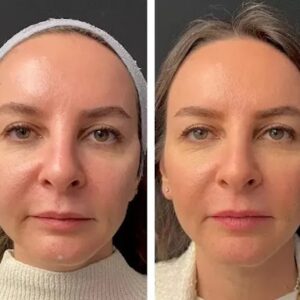(Dr. Varun Gupta), M.B.B.S, M.S (E.N.T.), FPLS (Belgium), internationally trained ent, Head & Neck and Sleep Surgeon, HOD Indus Health, Delhi)
If your child has trouble breathing through their nose, or breathes through their mouth, they could have pediatric nasal obstruction. This common problem affects many kids in Delhi NCR and can disturb their sleep, lower their school performance, and reduce their overall comfort in life. To get the condition checked and treated, visiting an ENT Specialist in Delhi is a key step. While it is manageable, the condition requires skilled medical care.

Nasal obstruction shows up differently in kids than in adults making it important for parents to figure out the specific difficulties their children are facing. It can be caused by small issues like cold-related blockages or bigger structural concerns that need expert treatment.
Understanding Nasal Obstruction in Children
Blocked or narrowed nasal passages stop air from moving through the nose causing nasal obstruction. This can be a bigger issue in kids since they rely on breathing through their noses while sleeping or eating. When nasal blockage doesn’t go away, a doctor should check to find the cause and decide how to treat it.
The condition shows up depending on the child’s age. Babies may have trouble feeding and sleeping, while older kids might struggle in school due to poor sleep. Knowing what causes nasal obstruction helps parents decide when to visit a doctor and figure out the best treatments for their child.
Kids have smaller nasal passages compared to adults, which makes it easier for minor swelling or mucus buildup to block them. This difference in anatomy means a minor issue for adults can affect a child’s breathing and overall health.
Common Causes of Nasal Obstruction in Children
Nasal blockages in kids can happen for all sorts of reasons, from short-term inflammation to structural problems that might even need surgery. Viral infections like colds and flu are the most common culprits behind temporary nasal congestion in children. These infections cause tissues in the nose to swell and produce extra mucus, which makes it harder to breathe. The breathing issues usually go away once the sickness is over.
Enlarged adenoids are the main reason kids often experience constant nasal blockage. These are lymphoid tissues sitting behind the nose that can grow bigger because of frequent infections or allergies. This growth can block airflow and make breathing harder. While viral infections clear up on their own, enlarged adenoids often need medical treatment to help children breathe again.
Allergic rhinitis happens when kids react to things in the environment like dust mites, pollen, or fur from pets. It leads to long-term swelling in the nasal passages. In Delhi NCR where pollution and seasonal allergens are common, children often face this problem. These factors make it a big issue for them.
Structural problems in the nose might not occur very often, but they can affect breathing. Conditions like deviated nasal septum, nasal polyps, or birth defects such as choanal atresia might need special surgeries to fix them. Another issue often seen in curious young kids, is sticking foreign objects in the nose. This needs quick medical help to avoid trouble.
Recognizing Signs of Nasal Obstruction in Children
Noticing symptoms of a blocked nose early helps parents get medical care in time and avoid bigger problems. The clearest sign is when a child keeps breathing through their mouth while sleeping. Kids with blocked noses might also snore , move around a lot in their sleep, or wake up often at night.
Chronic nasal blockage can lower a kid’s quality of life a lot. It can make focusing at school hard and keep them from enjoying physical activities. Parents might notice their child’s voice sounds stuffed up or “nasal” even when they aren’t sick. Pain or pressure in the face near the nose or forehead, could mean sinus problems.
Kids with blocked noses often show behavior changes too. Poor sleep makes them tired, cranky, and unable to focus, which hurts their performance at school. Babies with blocked noses might have trouble eating because they can’t breathe while feeding.
Physical signs show up as dark circles under the eyes, kids breathing through their mouths, and tilting their heads back to help them breathe better. Some children may start using their hands to push their noses up to get some quick relief from a blocked nose.
Advanced Diagnostic Approaches
Modern tools help ENT doctors figure out what causes nasal blockage in kids. They start by taking a full medical history and checking the child’s breathing, how they sleep, and other problems they might be having.
Flexible nasal endoscopy uses special tools made for children to look inside the nose and check the adenoids . This low-risk method shows clear details about blockages, swelling, or structural issues. The test does not cause much discomfort for kids.
Advanced imaging, like X-rays or CT scans when needed, can uncover structural problems that are hard to spot during a physical check-up. Doctors use these tools with kids thinking about radiation risks and what each child needs.
Doctors may suggest allergy tests if they think something in the environment is causing symptoms. Finding exact allergens helps create focused treatment plans and make changes around the child that can make a big difference in how they feel.
Modern Nasal and Sinus Disorders Treatment Options
Treating nasal blockages in children depends on their age, the cause, and how bad the symptoms are. Most of the time, doctors start with simple treatments for conditions caused by inflammation or small structural issues.
Cleaning the nose with saline rinses clears out mucus and eases swelling inside the Nasal and Sinus Disorders Treatment. This simple and safe method works well for kids of any age and helps relieve symptoms when done often. Medicines like intranasal corticosteroids given by doctors, work well to ease swelling and reduce irritation in the nasal tissues.
To treat kids with allergic rhinitis using antihistamines and making changes to their surroundings can make a big difference in controlling symptoms. Avoiding allergens alongside the right medicine can help kids breathe better and feel healthier overall.
When simple treatments do not work well, surgery might be needed. Adenoidectomy, where doctors take out swollen adenoids, is one of the frequent surgeries done for children in ENT. Newer surgical methods aim to reduce pain and healing time while giving good results over the long term.
Fixing more complicated issues like structural problems might involve surgeries such as septoplasty, removing polyps, or sinus surgery using an endoscope. These advanced methods are tailored for kids making sure the procedures are less invasive and lead to the best results.
Age-Specific Treatment Considerations
Doctors need to match treatment plans with a child’s age and specific health issues. Infants or newborns with serious nasal blockage might need quick treatment to help them breathe and eat . Using nasal suction or saline drops can ease mild congestion, but severe cases might call for surgery.
Toddlers bring different challenges because they often don’t cooperate well and may put small objects in their noses. Treatments for them focus on being safe and effective without needing their full cooperation.
Older kids and teens can take a more active role in managing their care. They can use nasal sprays or rinse devices and might try surgery if simpler treatments don’t work.
Specialized Rhinology Services in Delhi
Parents in Delhi NCR can find top-notch pediatric ENT care, with specialized rhinology services offering modern diagnostic tools and treatments. These services use the latest medical technology and focus on providing care tailored to young patients’ needs to achieve the best results.
Rhinology services in Delhi focus on personalized care. Doctors consider each child’s specific situation and requirements. Teams of ENT specialists, pediatricians, and other medical staff work together to give well-rounded and complete care.
These advanced services in Delhi aim to deliver the best results for children while using high-tech equipment and proven treatment plans. The goal is to keep treatments effective while making them as pain-free as possible.
When Professional Care Becomes Essential
Parents should visit a qualified ENT Specialist in Delhi if their child has ongoing nasal blockage for over two weeks. This is crucial if the child also struggles with sleep, feeding, or changes in behavior. Addressing nasal obstruction helps avoid lasting problems and improves a child’s well-being.
Parents should also look out for warning signs needing urgent medical help. These include serious breathing trouble, total nasal blockage, fever discolored nasal discharge, or worries about something stuck in the nose.
An ENT specialist in Delhi creates personalized care plans tailored to the child’s needs, age, and the family’s choices. This customized method ensures the treatment fits the situation best.
Expert Care at Indus Health
Indus Health in Delhi focuses on pediatric ENT care for nasal and sinus issues. The team uses advanced diagnostic tools while offering care aimed at meeting the needs of both children and their families.
The clinic handles everything from diagnosing conditions to providing follow-up care. Doctors explain a child’s health problems and outline treatment choices to help parents make well-informed decisions about their child’s medical care.


